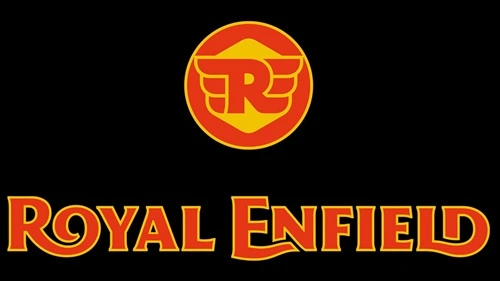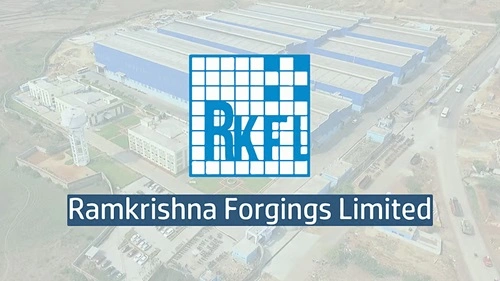Royal Enfield, a subsidiary of Eicher Motors, is one of the world’s oldest motorcycle brands in continuous production and a dominant player in India’s mid-size motorcycle segment. Known for its iconic retro-styled motorcycles, such as the Bullet, Classic, and Himalayan, Royal Enfield has cultivated a strong brand identity based on ruggedness, style, and heritage. With growing popularity among India’s youth and a rising presence in global markets, Royal Enfield is at an exciting juncture. However, with the motorcycle industry evolving and competition intensifying, the company faces both opportunities and challenges. This SWOT (Strengths, Weaknesses, Opportunities, Threats) analysis examines Royal Enfield’s current market position and future outlook.

Strengths
1. Strong Brand Legacy and Loyal Customer Base:
Royal Enfield’s brand legacy is one of its most significant strengths, with a history dating back to 1901. Its iconic design, rugged performance, and classic appeal have made it a beloved brand, particularly in India, where the Bullet and Classic models enjoy cult status. This strong brand identity has built a loyal customer base, with Royal Enfield enthusiasts viewing their bikes as symbols of style, freedom, and adventure.
2. Leadership in the Mid-Size Motorcycle Segment:
Royal Enfield dominates India’s mid-size motorcycle segment (250cc to 650cc), capturing a significant market share with models like the Classic 350 and Meteor 350. The company’s focus on this niche has given it a competitive edge, particularly as other players are more focused on either entry-level commuter bikes or high-end superbikes. Royal Enfield’s leadership in this segment allows it to command premium pricing and high margins.
3. Strong Manufacturing Capabilities and Economies of Scale:
With state-of-the-art manufacturing facilities in Chennai, Royal Enfield has a robust production capacity that supports its growth in both domestic and international markets. The company’s economies of scale, achieved through high-volume production of popular models, allow it to maintain cost efficiency and optimize profitability. This manufacturing strength provides Royal Enfield with the flexibility to meet rising demand, particularly in export markets.
4. Expanding International Presence:
Royal Enfield has successfully expanded its global footprint, with a presence in over 60 countries, including key markets like the United States, Europe, and Southeast Asia. The company has established exclusive stores in these regions and made strategic investments to build its brand internationally. This global expansion has helped Royal Enfield diversify its revenue sources, reduce dependence on the Indian market, and increase brand recognition in new territories.
Weaknesses
1. Limited Product Diversification Beyond Retro-Style Motorcycles:
Royal Enfield’s focus on retro-styled motorcycles, while a strength, also restricts its ability to capture other market segments. The company’s lineup is predominantly based on classic and adventure-styled bikes, with limited presence in sports, cruiser, or electric segments, where demand is also growing. This narrow focus on one category could limit Royal Enfield’s growth as consumer preferences shift and more diverse options become popular.
2. Quality and Reliability Issues:
Royal Enfield has faced criticism for quality and reliability issues, including engine vibrations, component failures, and electrical issues in some models. While the brand has taken steps to address these concerns, the perception of inconsistent quality remains a challenge. Quality concerns can negatively impact customer satisfaction and deter potential buyers, especially as competition from global brands with reliable offerings increases.
3. High Dependence on the Indian Market:
Despite its global expansion efforts, a large portion of Royal Enfield’s revenue still comes from the Indian market. This high dependence on a single market makes the company vulnerable to economic cycles, regulatory changes, and shifts in consumer sentiment within India. Diversifying its revenue base by strengthening its position in international markets is essential for Royal Enfield’s long-term sustainability.
4. Premium Pricing Limits Appeal to Cost-Conscious Consumers:
Royal Enfield’s premium pricing places its motorcycles out of reach for many cost-sensitive consumers in India and other emerging markets. While its iconic models enjoy a loyal following, the relatively high cost of ownership can be a barrier to expansion, particularly in price-sensitive regions. Introducing more affordable models or expanding financing options could help Royal Enfield broaden its customer base.
Opportunities
1. Growing Demand for Premium and Lifestyle Motorcycles:
India’s rising middle class and increasing disposable incomes are driving demand for premium and lifestyle motorcycles. Young, aspirational consumers view motorcycling as a leisure activity and a form of self-expression, fueling demand for brands like Royal Enfield. By expanding its premium offerings and introducing new models that align with lifestyle aspirations, Royal Enfield can further strengthen its position in this high-growth segment.
2. Expansion into Electric Motorcycles:
The global shift toward electric mobility presents a significant growth opportunity for Royal Enfield. The company has already signaled its intent to enter the electric motorcycle market, which aligns with global sustainability trends and government incentives. Developing an electric version of its iconic models or launching a dedicated electric motorcycle line could enable Royal Enfield to capture demand in the eco-conscious segment while appealing to younger, tech-savvy consumers.
3. Strengthening International Markets:
Royal Enfield’s efforts to expand internationally provide a valuable growth avenue. Markets in North America, Europe, and Southeast Asia show increasing demand for mid-size, affordable motorcycles with a unique design appeal. By investing in brand-building activities, establishing more exclusive showrooms, and expanding its dealership network, Royal Enfield can grow its international sales and reduce its reliance on the Indian market.
4. Collaboration and Innovation in Accessories and Apparel:
The global motorcycle accessories and apparel market is growing rapidly, driven by consumer interest in safety, comfort, and style. Royal Enfield has already ventured into this space with a line of branded gear and accessories, but there is room to expand further. By introducing more branded apparel, riding gear, and customized accessories, Royal Enfield can enhance brand loyalty, increase revenue, and position itself as a holistic lifestyle brand.
Threats
1. Intense Competition from Domestic and International Brands:
Royal Enfield faces stiff competition from both domestic players like Bajaj and TVS and international brands such as Harley-Davidson, Triumph, and Honda. These brands are increasingly targeting the mid-size segment in India and other emerging markets, introducing new models and innovative features. This intensifying competition requires Royal Enfield to continuously innovate and maintain its brand differentiation to retain market share.
2. Regulatory and Environmental Challenges:
The motorcycle industry is subject to stringent environmental regulations, especially regarding emissions. India’s transition to Bharat Stage VI (BS-VI) emission norms has increased manufacturing costs, impacting pricing and margins. Furthermore, as countries tighten emissions standards to combat climate change, Royal Enfield must adapt to these requirements, which may necessitate additional investments in cleaner technologies, including electric mobility.
3. Changing Consumer Preferences and Shifts in Lifestyle:
Consumer preferences are evolving, with a growing focus on fuel efficiency, eco-friendliness, and advanced technologies like ABS and traction control. Additionally, younger consumers are increasingly attracted to electric and hybrid options. If Royal Enfield fails to adapt to these changing preferences, it risks losing relevance among new-age consumers who prioritize convenience and innovation over traditional styles.
4. Rising Raw Material Costs and Supply Chain Disruptions:
The cost of raw materials, such as steel and aluminum, has been rising, impacting production costs and pricing. Additionally, the COVID-19 pandemic highlighted the vulnerability of global supply chains, causing delays and shortages that affected production schedules. Any future disruptions in the supply chain, including those caused by geopolitical issues or inflation, could impact Royal Enfield’s ability to maintain consistent production and pricing.
Future Outlook
Royal Enfield’s future outlook remains positive, backed by strong brand equity, a loyal customer base, and a leadership position in India’s mid-size motorcycle segment. With the Indian market poised for growth in premium motorcycles, Royal Enfield is well-positioned to capture demand from young, aspirational consumers seeking lifestyle products. By expanding its portfolio with models that cater to different segments, such as adventure and café racer motorcycles, Royal Enfield can continue to strengthen its market position.
The company’s entry into electric motorcycles will be pivotal as the industry shifts toward cleaner mobility solutions. By investing in R&D and leveraging its iconic design heritage, Royal Enfield can introduce electric models that appeal to both loyal customers and new, eco-conscious buyers. The development of electric motorcycles could also enable Royal Enfield to capture new customer segments and tap into government incentives for green technology.
Royal Enfield’s international expansion strategy offers a promising growth avenue, particularly in regions where demand for affordable, mid-size motorcycles is rising. Increasing brand awareness, enhancing dealership networks, and focusing on exclusive stores in these regions will enable Royal Enfield to build a strong global presence. Reducing its reliance on the Indian market and diversifying revenue streams through international sales can help Royal Enfield achieve sustainable growth.
However, to remain competitive, Royal Enfield must address challenges related to quality control, customer satisfaction, and operational efficiency. Addressing quality concerns and enhancing customer experience will be essential, particularly as competition from both domestic and international brands intensifies. In the face of rising costs and regulatory pressures, Royal Enfield’s ability to adapt and innovate will determine its long-term success.
In conclusion, Royal Enfield’s strengths in brand legacy, product appeal, and market leadership provide a solid foundation for growth in India and beyond. By seizing opportunities in electric mobility, international expansion, and lifestyle branding, Royal Enfield can strengthen its position as a global motorcycle icon. With a strategic focus on innovation, sustainability, and customer experience, Royal Enfield is well-positioned to navigate challenges and capture growth in an evolving automotive landscape.

